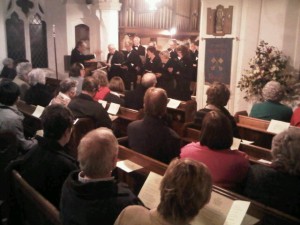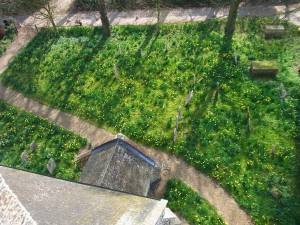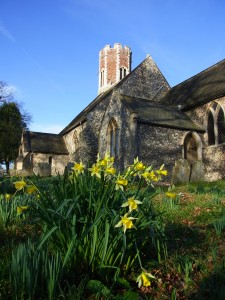Choral music by composers spanning five centuries graced Brampton Church on Saturday night. The twenty strong Hickling-based choir, the Nonsuch Singers, under the Guidance of the urbane Dominic Vlasto, sang works by the sixteenth century composer Orlando Lassus, William Byrd, Vaughan-Williams and Billy Joel amongst many others. Choral pieces were interspersed with readings of short pieces by Bernard Levin, Evelyn Waugh and some authentically delivered Noel Coward musings. The Coward readings alone would have been highlight enough if it was not for the genuine pleasure in hearing a choir in the nave of Brampton church. The church was full and the evening ended with a splendid light buffet. The lack of a proper car park at the church did led to an inevitable excitement at the end of the evening, but all in all the evening was a highlight and a great success.



